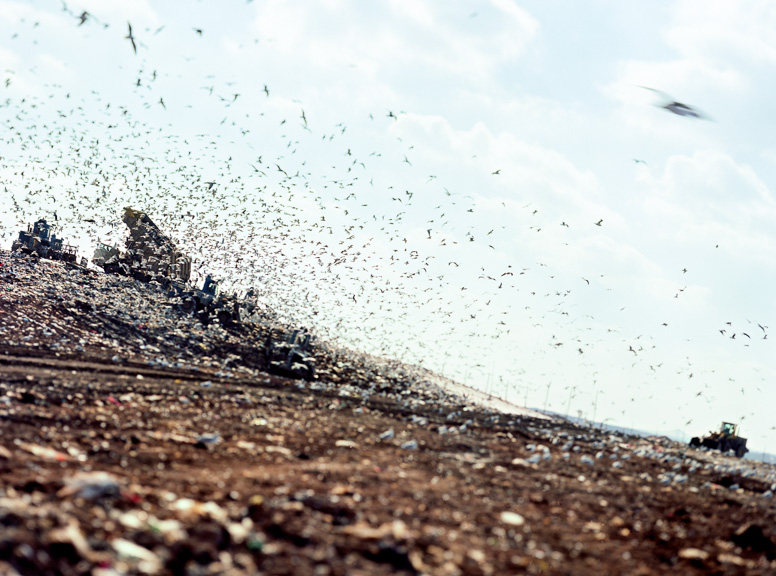This body of work includes photographs from the Fresh Kills landfill shortly before it closed in March 2001. The site reopened temporarily as a sorting ground for the rubble and refuse from the World Trade Center which I photographed at a salvage yard nearby. Once the largest landfill in the world, Fresh Kills is located on Staten Island at the edge of New York City.
The pictures explore the city’s polarities: The brand names visible among the detritus testify to the allure of their origin. Through focal manipulations of light, I seek to intensify the visualization of these extremes, and to dissolve it—debris turning to earth, evidence of consumerism transforming into a version of nature. As objects transition in and out of recognition, questions surface about what is real and what is invented.
While working, I was struck by the words of the poet A. R. Ammons from his book, Garbage: “garbage has to be the poem of our time because garbage is spiritual, believable enough to get our attention, getting in the way … what else deflects us from the error of our illusionary ways...”
Below is an excerpt from 'Genius loci, Ingenious Locations, and Landscape Photography Today'
Ellen Handy, CAMERAWORK', 2001
Susan Wides has extended her "Mobile Views" series with a group of epic landscapes made at New York City's infamous Fresh Kills landfill site on Staten Island, the locus of all that is discarded by the city. An austere expanse of refuse becoming landscape, detritus turning into earth, evidence of consumption undergoing transformation into a version of nature, it is a remarkable place and an apt landscape subject for our time. Wides sees it freshly, with the quirkily lyrical sensibility she brings to all things [..] Throughout her work, referents cycle in and out of recognition, and questions of reality versus invention introduce themselves. The "real world" she photographs actually exists only within her finished prints and (perhaps) fleeting on her own retinas, since it is one that cannot exist without the essential mediation of perception. If a tree falls in the forest and Susan Wides isn't there to see it, it can't be pictured.
|



